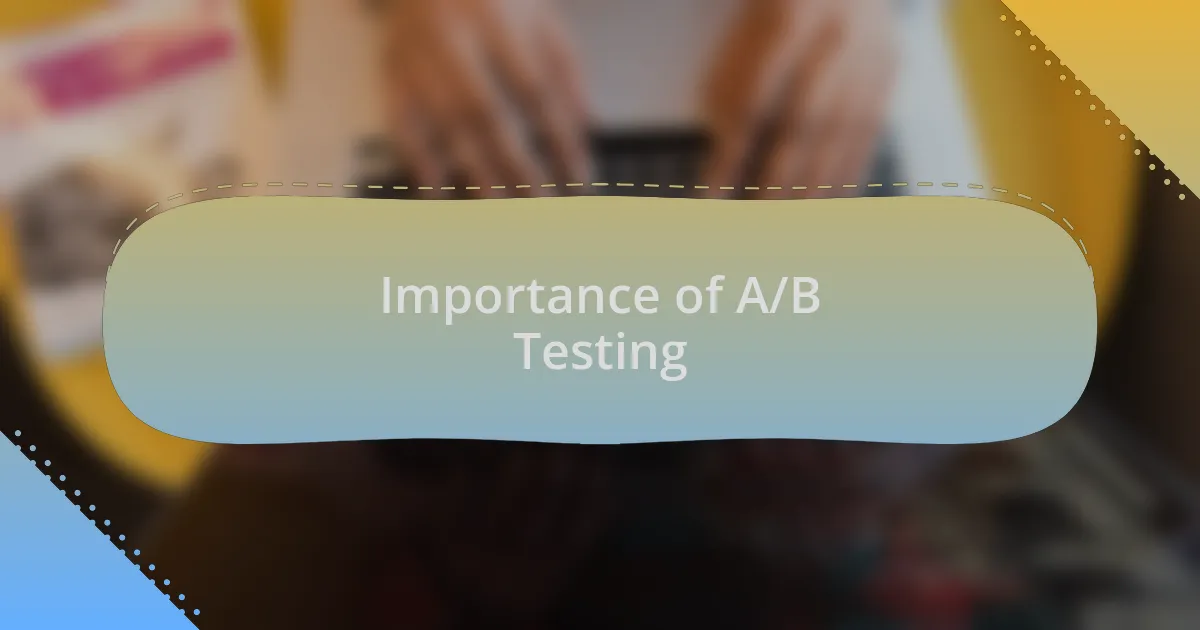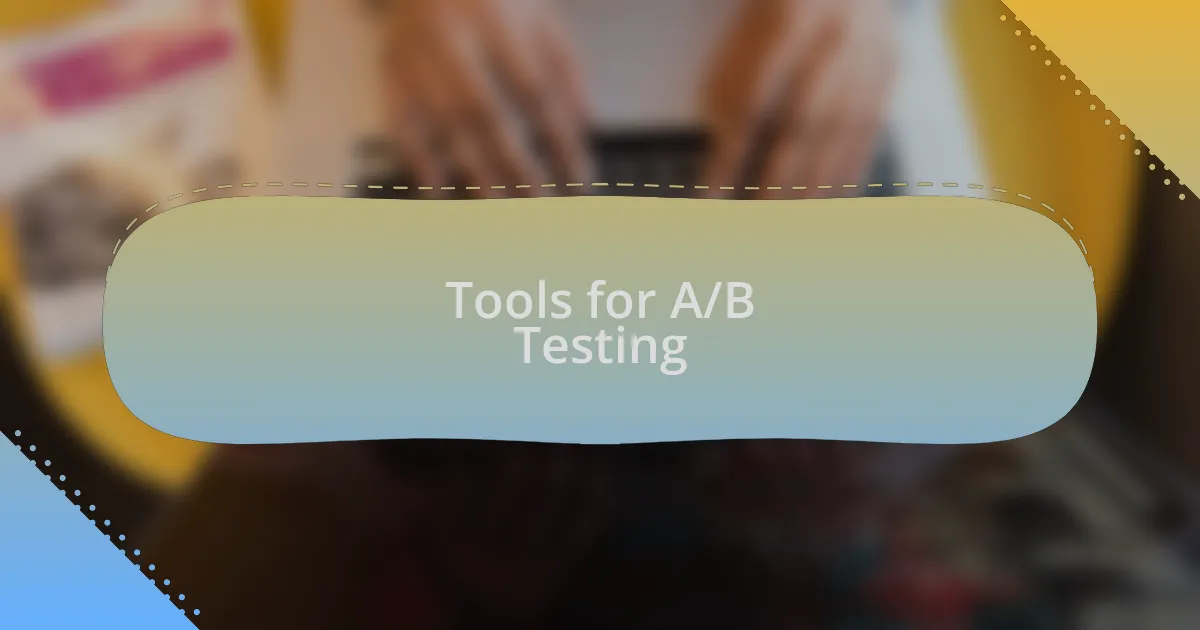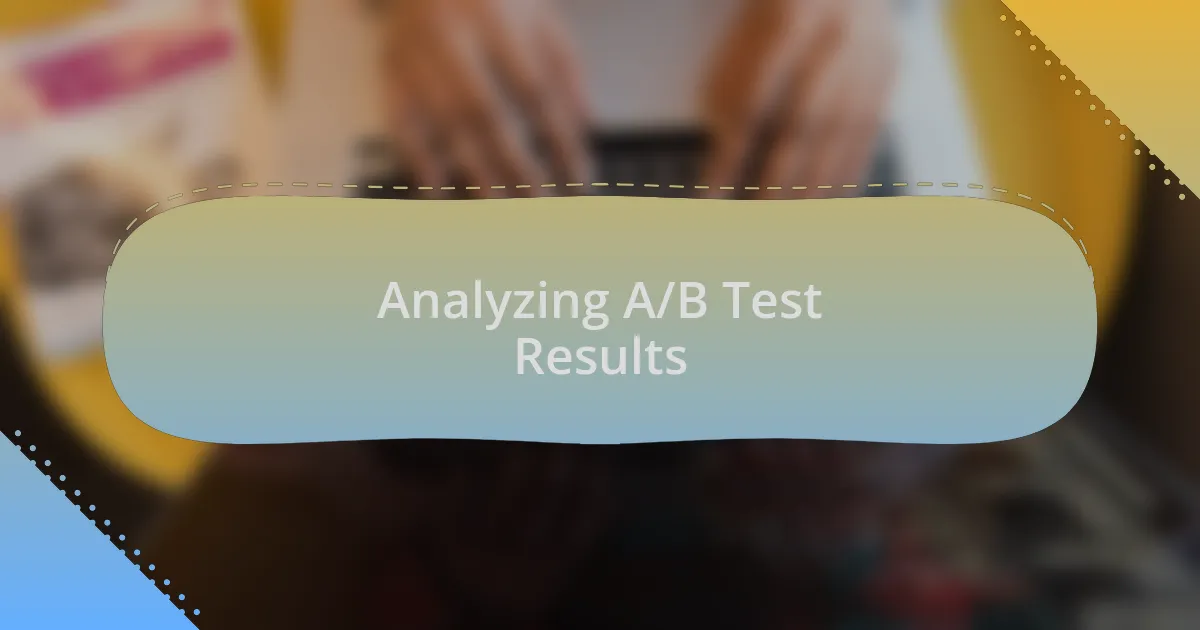Key takeaways:
- A/B testing involves comparing two versions of a webpage to identify which performs better, revealing insights into user preferences.
- The practice promotes data-driven decisions, showing that even minor adjustments can significantly enhance user engagement and conversion rates.
- Utilizing tools like Google Optimize, Optimizely, and VWO can streamline the testing process and provide valuable analytics for informed design choices.
- Understanding statistical significance and segmenting the audience during analysis are crucial for drawing meaningful conclusions from A/B test results.

Understanding A/B Testing Basics
A/B testing is a method I often lean on to enhance user engagement and drive conversions on a website. This technique involves creating two versions of a webpage—A and B—to see which one performs better. Imagine running a test where one version has a bold call-to-action button while the other uses a more subdued design; it’s fascinating how subtle changes can lead to significant results.
When I first dabbled in A/B testing, I was surprised by how quickly I could gather data and insights. I vividly recall a time when a slight tweak in the headline on my landing page boosted my conversion rate by over 20%. Can you believe that such a small shift made such a big difference? It’s moments like these that illustrate the power of A/B testing and how it can reveal what resonates best with your audience.
Ultimately, A/B testing is not just about making changes; it’s about understanding why those changes work. Have you ever wondered why your audience prefers one layout over another? By analyzing user behavior through these tests, I found that the emotional connection your content creates can be just as important as the functionality itself.

Importance of A/B Testing
The significance of A/B testing in website optimization cannot be overstated. I remember one specific project where I was hesitant to change the color of a button on an e-commerce site. After conducting an A/B test, I discovered that a simple color switch led to a measurable increase in click-through rates. This showed me not just the importance of data-driven decisions, but how even the smallest details can influence user behavior.
As I continued my journey with A/B testing, I began to understand it as a language of its own—a way to speak to my audience through experimentation. Every test tells a story, revealing what clicks (literally!) with my visitors. Have you ever felt uncertain about a design choice? Trust me, running tests can provide clarity and context that gut feelings often lack. The revelations from A/B testing have changed how I view design decisions; suddenly, they feel less like shots in the dark and more like informed choices based on real feedback.
Moreover, A/B testing fosters a culture of continuous improvement. Instead of resting on laurels, I found myself constantly searching for ways to enhance user experience. This practice not only keeps the website fresh but also reinforces my commitment to understanding my audience better. It’s like having an ongoing conversation with users—every test is a chance to listen, learn, and adapt. Isn’t that an invigorating thought?

Tools for A/B Testing
When it comes to A/B testing, the right tools can make all the difference in your results. In my experience, I’ve found Google Optimize to be incredibly user-friendly. It allows you to easily set up experiments without deep technical skills, making it accessible for many. Have you ever wished for a simpler way to test your ideas? This tool could be the answer.
Another tool that I’ve come to rely on is Optimizely. It’s quite powerful for more complex A/B tests and offers features like multivariate testing. I remember using it for a landing page overhaul. The insights I gathered were invaluable in shaping my approach to user engagement. Optimizely really helped me see the bigger picture of how various elements interact.
Lastly, there’s VWO, which I appreciate for its robust analytics capabilities. It gives detailed reports that highlight not just what performed better but why. Reflecting on my own usage, I value the clarity it provides—after all, understanding the ‘why’ behind user actions is crucial. Have you explored different tools? Finding the right one can truly enhance your A/B testing journey.

Analyzing A/B Test Results
Analyzing the results from an A/B test is where the magic happens. I still remember the rush of excitement I felt when I finally uncovered clear insights after running a test. Was it the button color or the call-to-action that drove more clicks? Digging into the data revealed which changes resonated with users, providing clarity that can sometimes be elusive.
I always emphasize the importance of statistical significance when interpreting A/B test results. With my experience, I’ve seen too many teams jump to conclusions based on minor improvements. Have you ever found yourself excited about a slight increase, only to realize it wasn’t statistically significant? Understanding this concept can save you from making decisions that aren’t backed by solid data.
Finally, I find that segmenting your audience during analysis can lead to even deeper insights. When I analyzed results based on user demographics, I discovered that different groups reacted uniquely to changes. This nuance taught me that one-size-fits-all solutions often fall short. Have you considered how different segments might impact your results? Embracing this complexity can dramatically enhance your understanding and overall strategy.